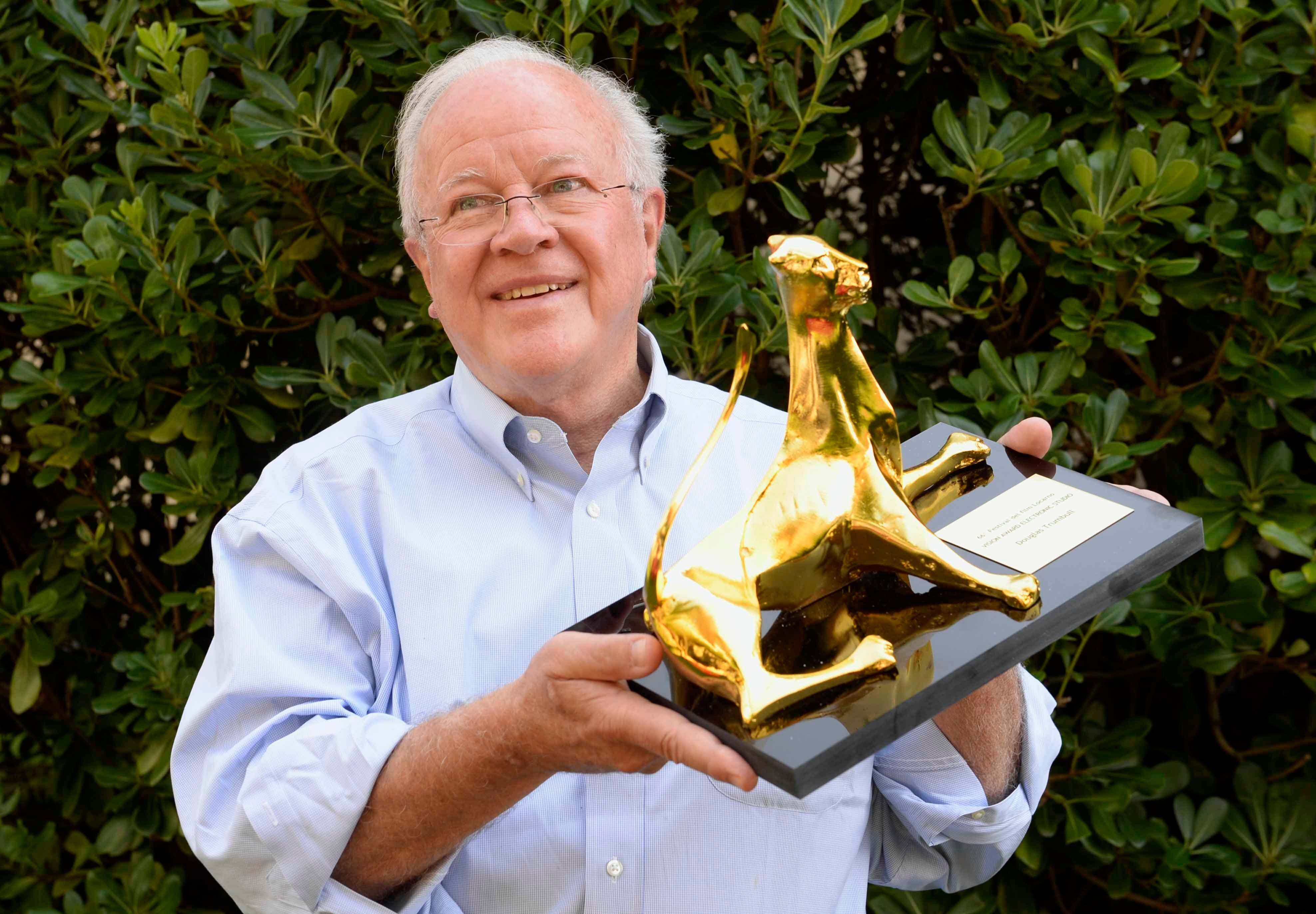'2001,' 'Blade Runner' effects pioneer Douglas Trumbull dies
Douglas Trumbull, a visual effects master who showed movie audiences indelible images of the future and of space in films like “2001: A Space Odyssey,” “Close Encounters of the Third Kind” and “Blade Runner,” has died

Your support helps us to tell the story
From reproductive rights to climate change to Big Tech, The Independent is on the ground when the story is developing. Whether it's investigating the financials of Elon Musk's pro-Trump PAC or producing our latest documentary, 'The A Word', which shines a light on the American women fighting for reproductive rights, we know how important it is to parse out the facts from the messaging.
At such a critical moment in US history, we need reporters on the ground. Your donation allows us to keep sending journalists to speak to both sides of the story.
The Independent is trusted by Americans across the entire political spectrum. And unlike many other quality news outlets, we choose not to lock Americans out of our reporting and analysis with paywalls. We believe quality journalism should be available to everyone, paid for by those who can afford it.
Your support makes all the difference.Douglas Trumbull, a visual effects master who showed movie audiences indelible images of the future and of space in films like “2001: A Space Odyssey,” “Close Encounters of the Third Kind” and “Blade Runner,” has died. He was 79.
His wife Julia Trumbull said he died Monday of complications from mesothelioma.
Director Edgar Wright tweeted, “RIP to an actual visionary, Doug Trumbull...he directed a childhood favourite of mine, the sci fi gem ‘Silent Running.’ Watch it tonight.”
Producer and documentarian Charles de Lauzirika, who worked with Trumbull on “Blade Runner: The Final Cut,” tweeted that, “He wasn’t just innovating magnificent visuals, but also pursuing the big ideas behind whatever story he was telling.”
Born in Los Angeles in 1942, Trumbull’s father was visual effects supervisor Donald Trumbull, who worked on “The Wizard of Oz.” He got his start at Graphic Works Films, where a short of his caught the attention of Stanley Kubrick who was beginning work on “2001: A Space Odyssey.” At 23 years old, he not only talked himself into a key job on “2001" but helped innovate the process that would be used to create the iconic star-gate sequence.
"It was a really unique time because we were at these Borehamwood Studios outside of London and it was a highly unionized studio," he said in an interview. “Here I am, this weird, L.A., young 23-year-old cowboy kid that they took on as kind of a mascot more than anything. It didn’t frighten them that I would crossover between all these different departments and get components built for me to do the things I wanted to do. They were totally supportive and thought it was funny and weird and whatever, and this kid’s going to do it and Kubrick says it’s okay, so we’ll do it, and we did some pretty amazing stuff that wouldn’t have happened otherwise.”
Over the course of his career, which recently included work on Terrence Malick’s “The Tree of Life,” he pushed forward filmmaking techniques like slit-scan photography, which was used for “2001." He also developed the Showscan film process, in which 70mm film is projected at 60 frames per second to create a sense of heightened reality.
After he made a name for himself on “2001,” he worked on Robert Wise's adaptation of “The Andromeda Strain,” Steven Spielberg's “Close Encounters of the Third Kind,” Wise's “Star Trek: The Motion Picture,” and Ridley Scott's “Blade Runner.”
He made his directorial debut with “Silent Running,” a dystopian sci-fi film starring Bruce Dern in which plant life is becoming extinct on earth. Roger Ebert, in his review, wrote that Trumbull “is one of the best science-fiction special-effects men. ‘Silent Running,’ which has deep space effects every bit the equal of those in ‘2001,’ also introduces him as an intelligent, if not sensational, director.”
He also directed the 1983 sci-fi film “Brainstorm,” which had the distinction of being Natalie Wood’s last role. Wood died during a break in production after most of her scenes had been completed. The tragic death and the subsequent fights with MGM soured Trumbull on the business and he said in an interview that he had no interest in doing another Hollywood feature.
“I just had to stop,” he told The Hollywood Reporter in 2013. “I had been a writer-director all my life, and I decided it wasn’t for me because I was put through a really challenging personal experience. I do not think the story has ever been told. I don’t know the story myself, but I know what my experience was. I decided to leave the movie business.”
He didn't exactly retire though — he developed the “Back to the Future” ride at Universal Studios in Orlando and Los Angeles from his new home in the Berkshires. And Trumbull would eventually return to Hollywood films after some 30 years with work on “Tree of Life," where he consulted on the beginning of the universe sequence, and an experimental sci-fi short “UFOTOG" among other projects.
Trumbull got three Academy Award nominations for visual effects (for “Blade Runner,” “Star Trek” and “Close Encounters”) and, in 1992, a special scientific and engineering award for his work helping to design the CP-65 Showscan Camera System for motion picture photography.
In 2012, he received the Academy’s Gordon E. Sawyer Award, a special technical Oscar for his contributions to the industry. More recently, he was at work on a documentary about “2001” and developing a sci-fi script with John Sayles.
The family said in a statement that, “In Trumbull’s memory and his love of the giant screen, we hope that you will support your local theaters.”